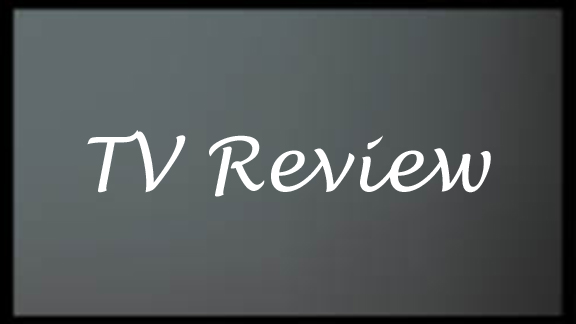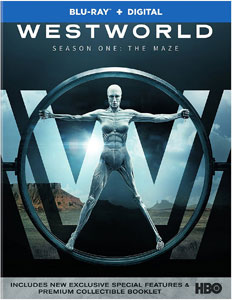When I got a few months of free HBO with my new Dish Network subscription, the first show I programmed into my DVR was “Westworld,” which launched with a 10-episode season in 2016 (and will return next year). Evan Rachel Wood (“Once and Again”) and the universally great reviews from critics and fans (9.0 on IMDB) drew me in, the entertainment value kept me there, and the non-cliched way it delves into the oldest sci-fi theme (“What defines humanity?”) has me still thinking about it.
Improving on Crichton’s template
Springboarding from Michael Crichton’s 1973 movie, which is more renowned for its influence than its quality, the HBO series brings us into an Old West theme park with paying guests (humans like you and I) and hosts (robots).
The guests are generally interested in “shooting and f***ing” the hosts, although park co-creator Robert Ford (Anthony Hopkins) does offer deeper narratives such as treasure hunts and pursuits of fugitives. And one veteran guest, the villainous Man in Black (Ed Harris), is on the ultimate narrative, the quest for the center of “the maze.”

“Westworld” Season 1 (2016)
HBO, 10 episodes
Creators: Lisa Joy, Jonathan Nolan
Stars: Evan Rachel Wood, Jeffrey Wright, Ed Harris
A big reason why “Westworld” entertained me is because it bounces back and forth between the sci-fi and Western genres. While the two genres are sometimes blended into a “sci-fi/Western” (“Firefly” is a blunt example, “Star Wars” a more subtle one), it’s the contrast that works here.
I’m not a big Western fan, but there’s fun to be had in these scenes because the surface action is fake: When a host is shot dead, they are gathered up by a Westworld employee, refurbished and sent back into the field. The guests, on the other hand, can’t be hurt by the host’s bullets.
Just when I’ve had my fill of Western parody, we snap back to the inner workings of the park, and see the grunts pulling bullets out of hosts and the computer technicians (led by Jeffrey Wright’s Bernard) tweaking hosts’ programming with thin iPads of the future or diagnosing problems with voice commands. These scenes have an enjoyably foreboding “Jurassic Park”-ian feel.
We feel for the robots
Gradually, it all gets under your skin. We know they are robots, but it’s still disturbing to see piles of bloodied, naked hosts in a glass room where they are sprayed down. More to the point, when farmer’s daughter Dolores (Wood), saloon madam Maeve (Thandie Newton) and other hosts undergo analysis sessions, they seem human – childlike, sure, but human.
Quickly, we understand that the fact that they aren’t human does not matter one lick — even though it’s the only relevant point to one of the jerkiest guests, Logan (Ben Barnes).
A lot of sci-fi sagas have already shattered the notion that biologically born humans are automatically superior to human-created facsimiles. “Star Wars” has its clones and human replica droids.

“Alien” has its synthetics. “Terminator” started off with the idea that we should fear robots, but every entry since the first film has featured good Terminators – and the most recent ones have blurred the line between human and machine, tiptoeing toward the singularity (the point at which humans have so much machine in them that the idea of fearing machines would be counter-intuitive).
“Westworld” likewise invites us to root for the robots – and see the humans as villains — right away. But it’s not blunt about it. Logan’s bigoted approach is logical on the surface, and driven home when he stabs Dolores, revealing machine parts. (And, indeed, when we do eventually encounter an advanced robot in the real world, let’s be honest: We might not be too welcoming. And maybe we shouldn’t be, as films like “Ex Machina” warn us.)
The question of consciousness
“Westworld” assumes we’ll start from Logan’s point of view (even though we don’t) and presents a twisty-yet-measured 10-episode case for why the robots should be seen as equal to humans.
When philosophers debate this classic sci-fi question, they sometimes ask “At what point does a robot gain sentience?” (The world “self-awareness” is used in “Terminator,” and “Westworld” favors the term “consciousness.”) Another way to phrase it would be: “At what point does the robot cross a threshold where it becomes human in every way that matters?”
Ford intriguingly posits that there is no threshold; “Westworld’s” robots are therefore just as human as a human being. (While there is plenty of religious symbolism on the show – including the fact that Ford is playing god — I like how “Westworld” doesn’t argue that a “soul” makes someone human. While that’s an interesting idea in religion and in other sagas such as “Buffy”/”Angel,” it’s beside the point here.)
Ford’s co-creator, Arnold (who is a mysterious, seemingly deceased figure through eight episodes), believes almost the opposite: He thinks memory is the key to consciousness. Memories allow beings to learn from their mistakes, and therefore grow. In different ways, Maeve’s and Dolores’ arcs are about holding on to their memories. And Ford, Arnold and the Man in Black want to help the hosts retain their memories (although we don’t know this about Ford until the very end).
What will the hosts do?
What’s really fascinating is the question of what the hosts will do once they realize they are – in every way that matters – human. William (Jimmi Simpson), a rare guest who sees the hosts’ plight, assumes that Dolores’ end game is to get out of the park. She corrects him.
If William pays to enter the park in order to escape reality, what would be the appeal of reality to her? Ford also illustrates the absurdity of the notion that getting out of the park would have appeal to the hosts, noting that humanity is not likely to throw a ticker-tape parade for the first sentient robot.
(Side question: Is William drawn to Dolores because she is just any old robot fighting her programming? Or is he drawn to her because she’s an appealing young woman fighting her programming? I suspect the latter. We, as humans, place more specialness on outwardly appealing people, and TV re-emphasizes this bad habit. I suspect, though, that “Westworld” is very aware that it’s engaging in this cliché, and that it does so with purpose.)
“Westworld” also subtly plays against the assumption that any conscious being will choose freedom over being ruled. Again, why would we make such an assumption, when we live in a world where many people (indeed, most people) prefer being ruled?
Maybe the ultimate markers of human-ness are individuality and unpredictability, as illustrated by the actions of the two renegade hosts in the season finale. Maeve, after episodes’ worth of scheming, has boarded the train to the real world. But she disembarks and returns to the park. Dolores — who is inconsolable when she recalls killing under the sway of past programming – guns down every Westworld worker and guest at the conclusive party.
Expensive ‘shooting and f***ing’
Workers, guests and awoken hosts all concede that Westworld offers “shooting and f***ing,” but we see much more of the former; humorously, unexplained gunplay is in the background of many park scenes.
So while many guests have enjoyed participating in violence without consequences, in the end, the human race pays a price: Violence has led to such strong memories that the hosts retain them, gain consciousness, and take over the park. (The problematic nature of collectivist groupings is a whole ‘nother rabbit hole inspired by “Westworld,” but I’ll set that aside for now.)
Oddly for a prestige TV show, Season 1 ends with a silly after-the-credits shot in the vein of blockbuster franchise movies. Outlaw host Armistice (Ingrid Bolso Berdal), she of the full-body snake tattoo, cuts off her trapped arm “Terminator”-style and gleefully enters into the violent fray against Westworld security guards.
But it’s also a crisp thesis statement for those who would like Ford’s and “Westworld’s” philosophizing contained to a nutshell.

